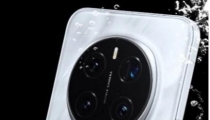
How to Manage a Distributed Remote Team Nov 23, 2024


How to Secure CRM Software and Ensure Data Privacy Sep 30, 2024



How NLP Can Transform Your Communication Skills Aug 27, 2024

Essential HVAC Maintenance for Rental Properties Aug 26, 2024

Maximizing Equipment Lifespan with CMMS Software Aug 08, 2024

Top Business Tools for Streamlining Your Operations Aug 01, 2024
Pioneer's New HUD Has Augmented Reality. Sci-Fi Becomes Real (Video)
Sep 05, 2013 17:47

The idea of projecting anything on a car's windshield seemed like science fiction years ago. Today, its becoming a reality and Pioneer's NavGate head-up display is the latest in it. And its also quite affordable.
The NavGate system clips onto the driver's side visor and uses lasers to create an image equivalent to a 30 inch display, 15 feet in front of the vehicle. It will display everything from turn by turn directions to estimated time of arrival and the current speed and speed limits.
The system also pairs up with a smartphone and works with the CoPilot and iGo Primo navigation apps.
Pioneer's NavGate will be available in Europe next month for a cool £600 (approx $933 / RM3,000 ). Should they make this tech standard? We sure hope so. Here's to the future. Check out the video below: [Pioneer via Engadget]

Let’s be honest; OTT platforms have completely changed our movie-watching experience and made entertainment just a click away. A few years ago, who would have thought that watching regional or international movies could be this easy, convenient, and tailored to our budget and preferences? And, yet here we are enjoying the options of Marathi, Malayalam, Hindi, Gujarati, Tamil movies, and a lot more at our fingertips. Read more

Electronic Logging Devices (ELDs) have revolutionized the trucking industry by streamlining logging practices and ensuring compliance with federal regulations. Designed to monitor a vehicle’s engine and automatically record driving hours, ELDs replace traditional paper logs and provide an efficient solution for tracking Hours of Service (HOS). If you're looking to complement your fleet's technology, partnering with tools like a reliable truck dispatch service can further optimize operations and keep your business running smoothly. Read more

The HONOR Magic 7 Pro price in ksa makes it an appealing option for those looking for a high-end smartphone. This advanced device stands out with its sleek design and robust build quality. This blog delves into the details, examining what makes the HONOR Magic 7 Pro unique, from the materials used to its overall durability and user experience. If you’re considering purchasing a high-end smartphone that balances aesthetics and functionality, this review of the HONOR Magic 7 Pro’s design and build quality will provide you with all the information you need. Read more
TECH NEWS
Jan 11, 2025 14:55
Copyright © Fooyoh.com. All rights reserved. User Agreement | Privacy Policy | Contact us
| Advertising
| About us
| Careers


















































